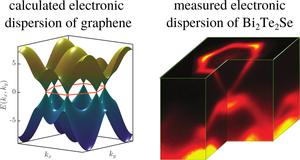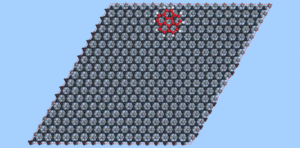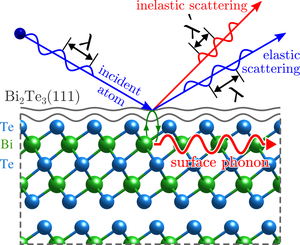Research - Exotic Surfaces
We are interested in the interaction of surfaces with its environment. In particular, we are working on surfaces of the material classes of Dirac materials, including the so-called topological insulators which are promising candidates for potential applications in spintronics and quantum computation. Our goal is, to advance the fundamental understanding of these materials by studying surface dynamical processes and the atom-surface interaction with helium atom scattering.
We are also trying to obtain a better understanding of the nanoscale motion of molecules on surfaces. Experimental information is obtained in collaboration with a group in Cambridge and the Institute Laue Langevin in Grenoble. The video on the left, shows the motion of a corranulene molecule (buckybowl) on a graphite surface.
Helium atom scattering (short: HAS) is a technique used to analyse all kind of surfaces since it provides information both about the surface structure and lattice dynamics of a material. The whole scattering apparatus is set up in an ultra high vacuum chamber together with some other commercial surface analysis techniques such as AES (Auger electron spectroscopy) and LEED (low energy electron diffraction). A detailed description of the technique can be found here


